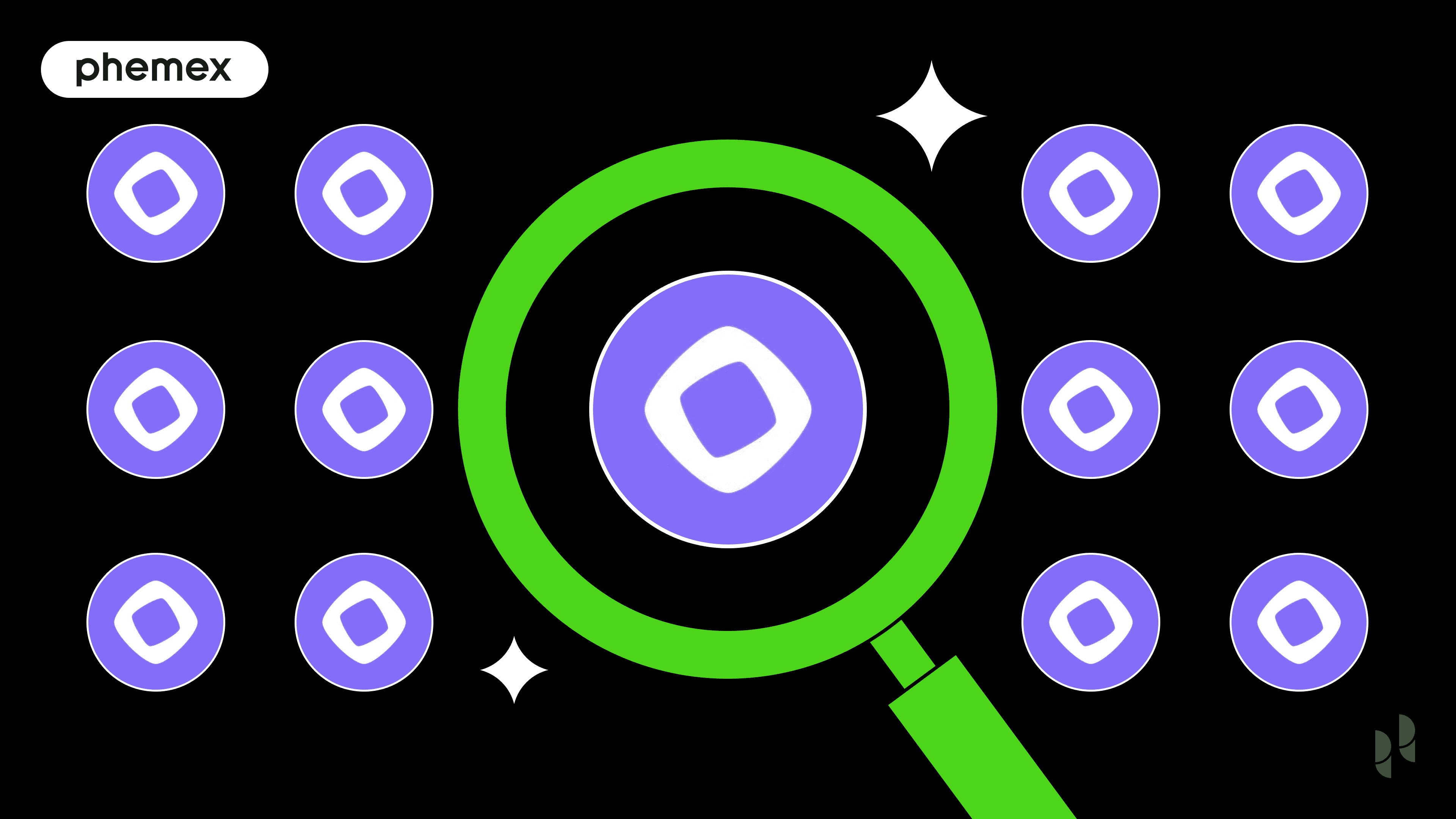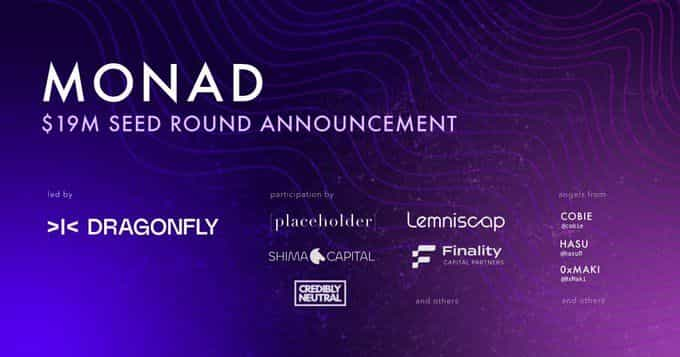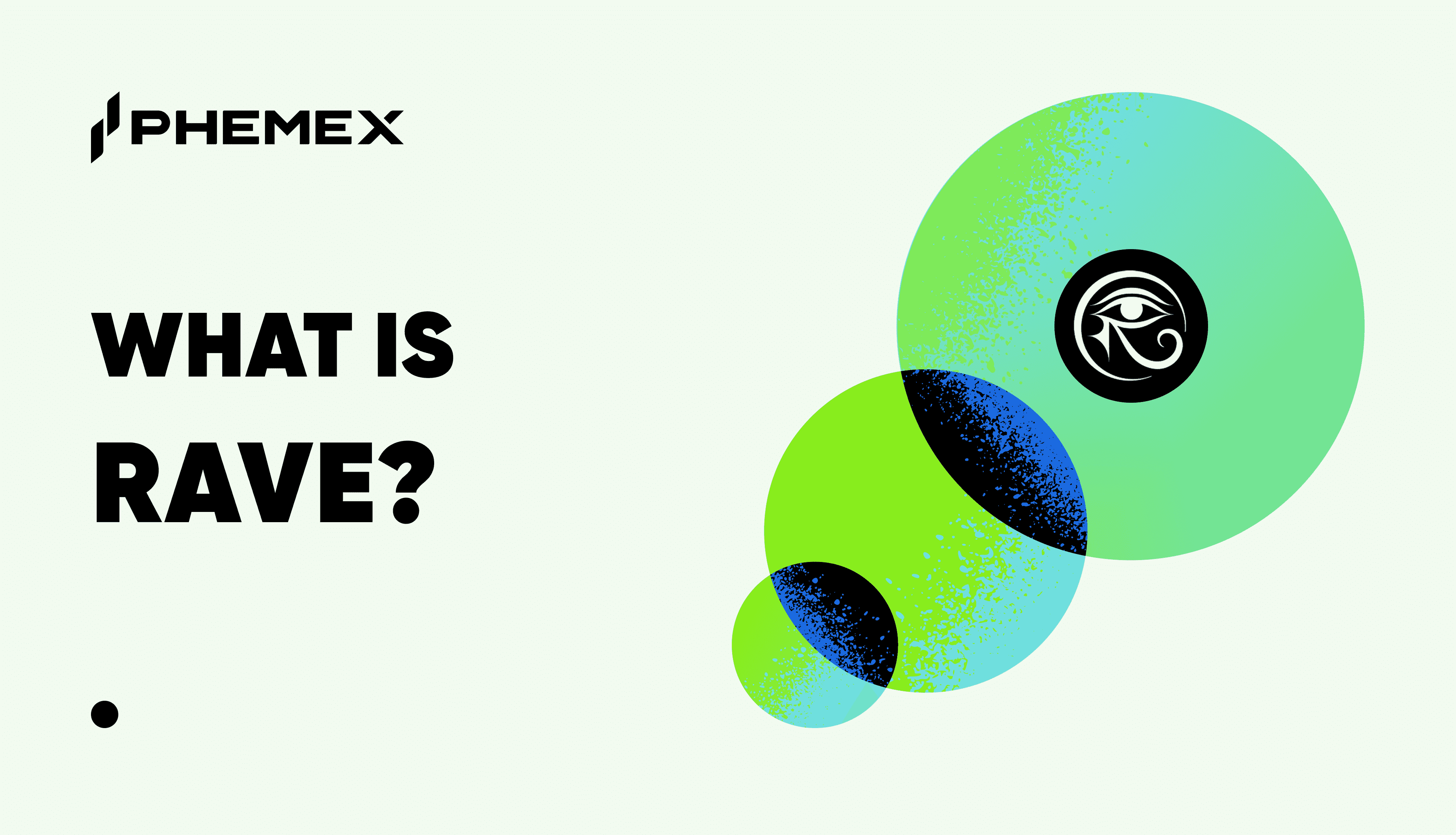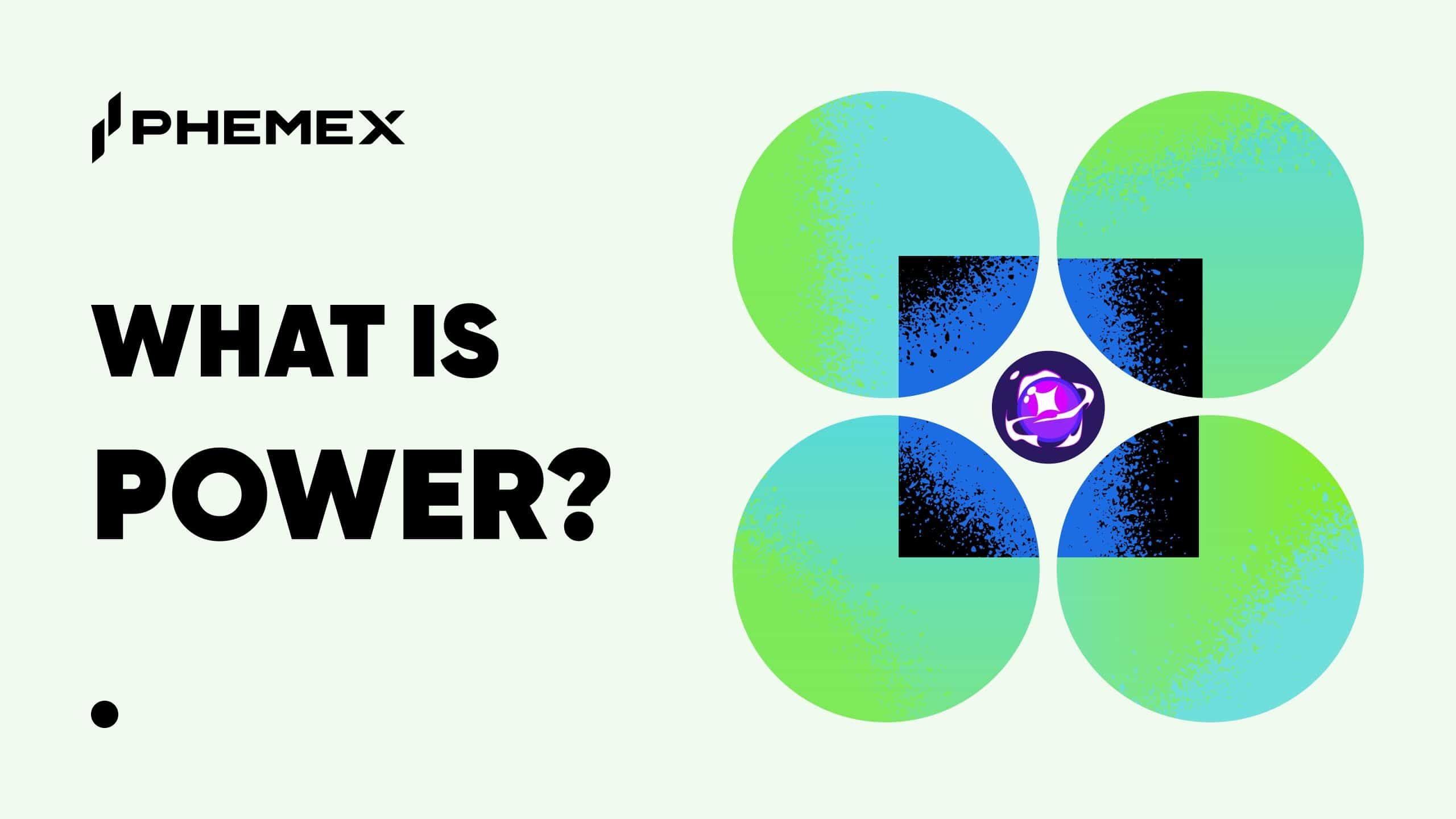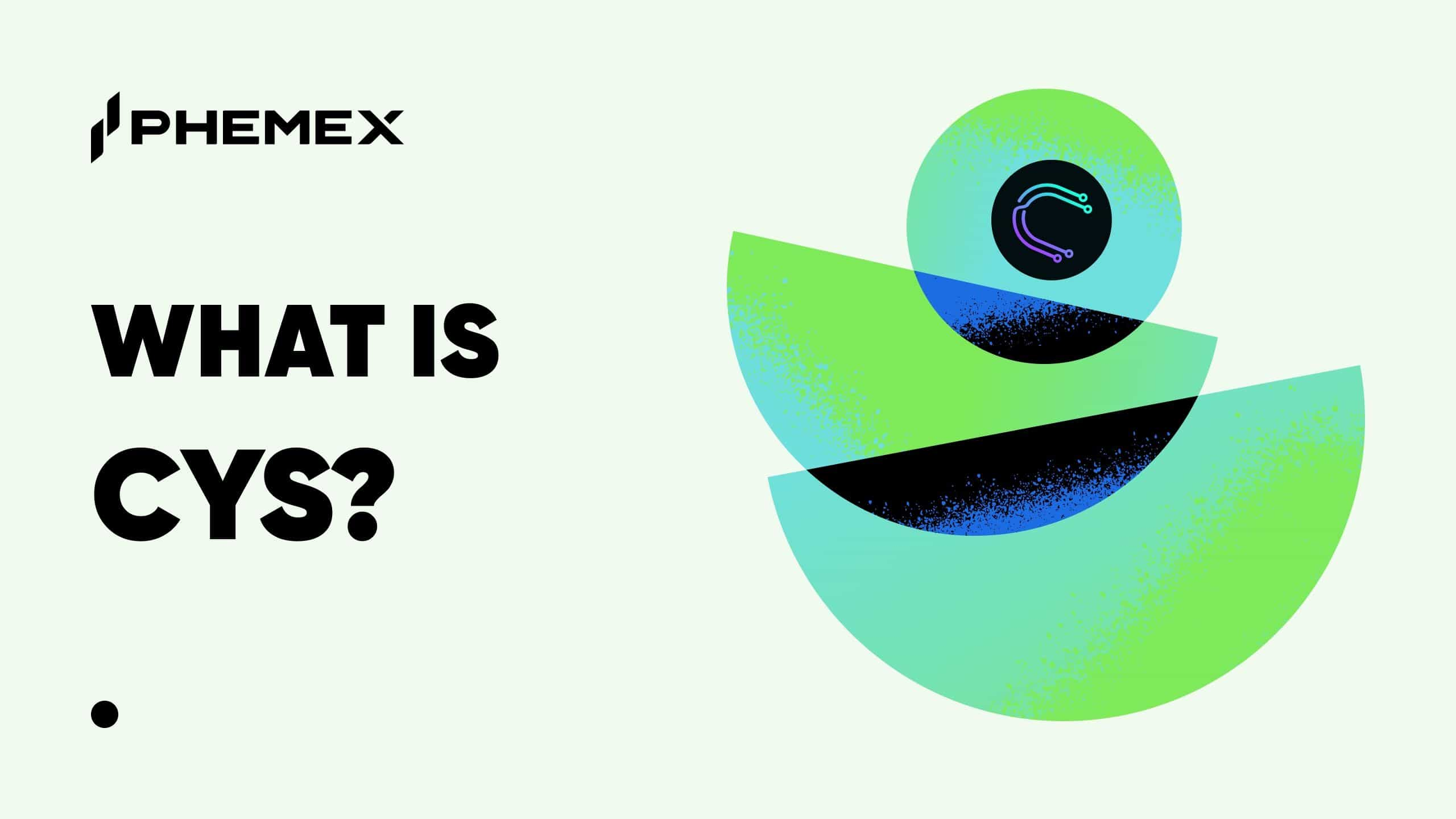Key Takeaways
-
What is Monad? Monad is a next-generation, EVM-compatible Layer-1 blockchain designed for extreme performance, targeting 10,000 transactions per second (TPS).
-
Core Innovation: It introduces parallel execution to the EVM, allowing it to process many transactions simultaneously, breaking the bottlenecks that slow down existing blockchains like Ethereum.
-
EVM Compatibility: Developers can deploy their existing Ethereum applications directly on Monad without changing a single line of code, instantly accessing higher speeds and lower costs.
-
Use Cases: Monad is built for high-demand applications like decentralized finance (DeFi), blockchain gaming, NFTs, and high-frequency on-chain trading.
-
Strong Backing: The project is supported by major venture capital firms, including Paradigm and Dragonfly Capital, having raised $244 million to fund its development.
Introduction
In the ever-evolving world of cryptocurrency, the search for a blockchain that is fast, cheap, and decentralized remains the ultimate goal. For years, developers and users have faced the "blockchain trilemma," forced to sacrifice one of these core tenets for the others. Monad (MON) emerges as a powerful new contender designed to solve this challenge. It is a Layer-1 blockchain that re-imagines the architecture of the Ethereum Virtual Machine (EVM) to deliver massive performance improvements without sacrificing decentralization or compatibility. This guide explains what Monad is, the groundbreaking technology behind it, and why it matters for the future of decentralized applications. To prepare for its market debut, discover how you can position yourself to trade Monad on Phemex.
What Is Monad? A Beginner-Friendly Explanation
Imagine a single-lane highway during rush hour. Every car has to wait for the one in front of it to move, causing massive traffic jams. This is how most current blockchains, including Ethereum, process transactions—one after the other (sequentially). Now, imagine that highway expanding into a 10-lane superhighway where cars can travel simultaneously in parallel. The traffic jam disappears.
This is the core concept behind Monad. What is Monad? It is a Layer-1 blockchain that implements parallel execution for the Ethereum Virtual Machine (EVM). By processing transactions concurrently rather than sequentially, Monad can achieve a theoretical throughput of 10,000 TPS, a monumental leap from Ethereum’s current capacity of around 15-30 TPS.
Crucially, Monad maintains full EVM compatibility. This is its secret weapon. It means any smart contract or application built for Ethereum can run on Monad without any modifications. Developers can use the same tools (like Solidity and Hardhat) and users can use the same wallets (like MetaMask), making the transition seamless.
Monad’s mission is to advance the efficient frontier between decentralization and scalability. Its philosophy is clear: performance improvements should never come at the cost of decentralization. By optimizing the entire blockchain stack—from consensus to execution to storage—Monad aims to provide the high-performance infrastructure needed to unlock the next generation of mainstream Web3 applications while upholding the core crypto principles of trustlessness and censorship resistance.
MON Tokenomics: Understanding the Supply and Utility
Tokenomics—the economics of a crypto token—is crucial for understanding its long-term value and function. The native token of the Monad blockchain is MON, which is integral to every network operation.
Max vs. Circulating Supply
The MON token has a fixed total supply of 10 billion tokens. This hard cap ensures that the token is not infinitely inflationary, providing a degree of scarcity.
As the Monad mainnet has not yet launched, the circulating supply is currently zero. The initial circulating supply will be determined by the token generation event (TGE) and the subsequent vesting schedules for investors, the team, and community rewards. Details regarding the full token allocation are expected to be released closer to the mainnet launch. A well-structured allocation is vital for aligning the incentives of all participants and will be a key factor influencing the future Monad price.
Inflationary or Deflationary Mechanisms
While full details are pending, the MON token will likely feature mechanisms to balance supply and demand. As a Proof-of-Stake network, new MON tokens will be issued as rewards to validators who secure the network, introducing a controlled level of inflation.
However, many modern blockchains incorporate deflationary mechanisms to counteract this issuance. A common approach, similar to Ethereum's EIP-1559, is to burn a portion of the transaction fees. If Monad implements a fee-burning mechanism, a fraction of every transaction fee paid in MON would be permanently removed from circulation, creating deflationary pressure that could increase as network usage grows.
What Does MON Do? Exploring the Use Case
The MON token is designed to be the lifeblood of the Monad ecosystem. Its utility is multifaceted, ensuring it is deeply integrated into the network’s technical and economic activities.
The primary Monad use case includes:
-
Paying for Transaction Fees (Gas): All operations on the Monad network, from simple token transfers to complex smart contract interactions, require computational resources. Users pay for these resources using MON tokens as gas fees. Thanks to Monad's efficiency, these fees are expected to be extremely low.
-
Securing the Network Through Staking: Monad uses a Proof-of-Stake (PoS) consensus mechanism. Token holders can stake their MON—either by running a validator node or delegating to an existing one—to help secure the network. In return for their contribution, stakers receive a share of the network rewards, paid in MON.
-
On-Chain Governance: MON token holders will have the power to participate in the governance of the Monad protocol. This allows the community to propose and vote on changes, such as network upgrades or adjustments to treasury parameters, giving them a direct say in the platform's future.
-
Medium of Exchange: As the ecosystem grows, MON will serve as the primary currency for dApps, NFT marketplaces, and games built on the Monad blockchain, facilitating a native on-chain economy.
Monad vs. Ethereum: A Head-to-Head Comparison
While Monad is designed to be fully compatible with the Ethereum ecosystem, its underlying architecture is engineered for a completely different performance tier. The table below breaks down the key differences between the two blockchains.
| Feature | Monad | Ethereum |
| Execution Model | Parallel Execution: Processes multiple transactions simultaneously, removing bottlenecks. | Sequential Execution: Processes transactions one by one, creating a queue during high demand. |
| Throughput (TPS) | Targets 10,000+ TPS, designed for high-frequency applications. | Averages ~15-30 TPS, which can lead to network congestion. |
| Block Time | ~1 second, enabling faster inclusion of transactions into a block. | 12 seconds, the fixed interval between new blocks on the network. |
| Transaction Finality | ~2 seconds, providing near-instant confirmation that a transaction is irreversible. | ~13 minutes, the time it takes for a block to be considered finalized and secure. |
| Consensus Mechanism | MonadBFT: A custom-built, high-performance Proof-of-Stake (PoS) consensus protocol. | Gasper: The current Proof-of-Stake (PoS) consensus protocol used by the Beacon Chain. |
| Developer Experience | Fully EVM-Compatible: Allows developers to deploy existing Ethereum dApps with zero code changes. | The EVM Standard: The largest and most established smart contract development ecosystem. |
| Primary Use Case | Built for high-performance dApps like on-chain order books, gaming, and social media. | A general-purpose platform focused on decentralization and security for a wide range of dApps. |
| Transaction Fees | Designed for extremely low fees due to high throughput and network efficiency. | Can experience high and volatile gas fees during periods of network congestion. |
The Technology Behind Monad: A Five-Part Optimization
Monad’s incredible performance isn’t the result of a single breakthrough but rather a series of deep, interconnected optimizations across the entire blockchain stack. These innovations address long-standing bottlenecks while preserving the EVM compatibility that developers love.
1. Parallel Execution and Asynchronous Execution
This is Monad's headline feature. By decoupling the four stages of transaction execution (ordering, execution, state writing, and consensus), Monad creates a pipeline, much like a factory assembly line. While one set of transactions is being executed, the next set is already being ordered. This asynchronous execution creates a much larger time budget for processing.
Within this budget, parallel execution comes into play. Monad’s engine can detect which transactions have no dependencies on each other and execute them all at the same time, leading to a massive increase in throughput.
2. MonadBFT: High-Performance Consensus
A fast execution engine needs a consensus mechanism that can keep up. MonadBFT is a custom, high-performance Byzantine Fault Tolerant (BFT) consensus protocol. It is optimized for speed and efficiency, enabling nodes to reach agreement on the order of transactions in a fraction of a second. This ensures that the consensus layer never becomes a bottleneck for the execution engine.
3. RaptorCast: Efficient Block Transmission
Once a block of transactions is created, it needs to be broadcast to all other nodes on the network as quickly as possible. Transmitting large amounts of data is a challenge. RaptorCast is Monad’s solution—an efficient block transmission protocol that minimizes data overhead and latency, ensuring all nodes remain in sync even with high transaction volumes and frequent blocks.
4. MonadDb: A Custom Database for State Access
Blockchains constantly need to read and write data from their state (the record of all account balances and smart contract data). Standard databases are not optimized for this unique workload, leading to slow performance. Monad developed MonadDb, a custom, highly-optimized database designed specifically for blockchain state access, dramatically speeding up data retrieval and storage.
5. Execution Events: Real-Time Data for Power Users
For advanced applications like trading bots, indexers, or market-making platforms, having access to blockchain data at the lowest possible latency is critical. Monad provides a system called Execution Events, a shared-memory communication system that publishes real-time data about every action taken by the EVM. This allows high-performance applications running on the same machine as a Monad node to consume a direct "firehose" of data, bypassing slower RPC connections.
Team, Origins, and VC Backing
Monad was founded in 2022 by a team with deep expertise in high-performance engineering, particularly from the world of high-frequency trading (HFT). The team is led by co-founder and CEO Keone Hon, who spent eight years at Jump Trading building ultra-low-latency trading systems. This background is critical, as the challenges of building a high-throughput blockchain share many similarities with building HFT systems.
The project’s vision and technical prowess have attracted significant attention from the top tiers of venture capital. Monad has raised a total of $244 million in funding. This includes a $19 million seed round in 2023 led by Dragonfly Capital and a landmark $225 million Series A round in 2024 led by Paradigm, with participation from Electric Capital and other notable investors. This level of backing not only provides a long runway for development but also serves as a powerful vote of confidence from some of the smartest minds in the crypto space.
Key News, Events, and Future Roadmap
The journey of Monad has been marked by significant milestones that have built anticipation for its mainnet launch.
-
April 2024: $225 Million Funding Round: Monad announced its massive Series A round, signaling strong institutional belief in its potential to capture a significant share of the L1 market.
-
Ongoing Testnet: The Monad testnet has been a resounding success, attracting immense interest from developers and users. This phase is crucial for battle-testing the network, identifying bugs, and allowing projects to prepare for deployment.
-
Growing Ecosystem: Even before its mainnet launch, a vibrant ecosystem of projects has begun to form around Monad, spanning DeFi, infrastructure, and gaming.
-
Mainnet Launch (Anticipated): The Monad mainnet is expected to launch in late 2024 or early 2025. This will be the most significant event in the project's history, as it will mark the official public release of the network and the MON token.
The latest news about Monad continues to highlight its progress toward creating a scalable and developer-friendly platform.
Is Monad (MON) a Good Investment?
Deciding whether to invest in Monad requires a balanced look at its potential strengths and the risks involved. The Monad investment potential is a topic of much discussion, and here are the key points to consider.
The Bull Case (Potential Strengths):
-
Technical Innovation: Monad's parallel execution technology is a genuine step forward for the EVM and directly addresses the scalability bottleneck that has plagued the industry.
-
EVM Compatibility: This is arguably its greatest strength. By removing the friction of migration, Monad can tap into the largest smart contract ecosystem in the world from day one.
-
World-Class Team & Backers: The team’s background in high-frequency trading is perfectly suited to building a high-performance blockchain. The backing of firms like Paradigm and Dragonfly adds immense credibility.
-
Market Need: There is a clear and persistent demand for a scalable, low-cost smart contract platform that can support mainstream applications.
The Bear Case (Potential Risks):
-
Intense Competition: The Layer-1 blockchain space is incredibly competitive, with established players like Solana and new entrants like Aptos and Sui also offering high performance.
-
Execution Risk: Monad’s technology is ambitious. While promising, the team must deliver a stable, secure, and performant mainnet that lives up to its claims.
-
Ecosystem Bootstrapping: A blockchain is only as valuable as the applications and users it attracts. Monad will need to successfully incentivize developers and users to build and participate in its ecosystem.
-
Market Volatility: Like all cryptocurrencies, the value of MON will be subject to the high volatility and broader trends of the crypto market.
Conclusion:
Monad is one of the most technologically promising Layer-1 projects to emerge in recent years. Its unique approach to solving scalability while retaining EVM compatibility gives it a distinct advantage. However, as with any pre-launch project, it carries inherent risks.
Disclaimer: This content is for informational purposes only and does not constitute financial advice. Crypto trading involves significant risks; only invest what you can afford to lose. Always conduct your own research before making any investment decisions.
How to Trade MON on Phemex (Upon Launch)
While Monad (MON) is not yet available for public trading, you can prepare for its highly anticipated launch on Phemex. By setting up your account in advance, you’ll be ready to act when the token is listed.
Here’s a simple guide on how to buy Monad once it becomes available:
-
Create a Phemex Account: If you don't already have one, sign up for a Phemex account. The process is quick and secure.
-
Fund Your Account: Deposit funds into your Phemex wallet. You can deposit other cryptocurrencies (like USDT, BTC, or ETH) or use fiat currency to buy crypto directly.
-
Stay Informed: Follow Phemex's official announcements page and social media channels to be the first to know when MON is listed.
-
Navigate to the Spot Market: Once listed, find the MON trading pair (e.g., MON/USDT) in the Phemex spot market.
-
Place Your Order: You can place a market order to buy at the current price or a limit order to specify the price at which you want to buy.
By preparing now, you can ensure a smooth experience when you are ready to trade MON.
Frequently Asked Questions (FAQs)
1. What makes Monad different from other high-performance L1s like Solana?
While both offer high throughput, Monad's key differentiator is its full EVM compatibility. This allows it to leverage Ethereum's massive network effect of developers, tools, and applications without requiring any code changes, which presents a lower barrier to adoption.
2. Is Monad a Layer-2 solution for Ethereum?
No, Monad is a standalone Layer-1 blockchain. It does not settle its transactions on Ethereum. Instead, it is a completely independent network with its own consensus and security, designed to be an alternative, high-performance environment for EVM applications.
3. How does Monad's parallel execution actually work?
Monad's execution engine identifies transactions in a block that do not depend on each other's outcomes (e.g., two people sending tokens from entirely different wallets). It then executes these independent transactions simultaneously, rather than one by one, dramatically increasing processing capacity.
4. What is the total supply of MON?
The total supply of MON is capped at 10 billion tokens. Details on the initial circulating supply and token distribution will be released closer to the official launch.
5. When can I trade Monad (MON)?
The MON token is not yet publicly trading. It is expected to launch alongside the Monad mainnet. For the latest updates, stay tuned to official Phemex announcements. To learn more about trading strategies and market analysis, explore Phemex Academy.





